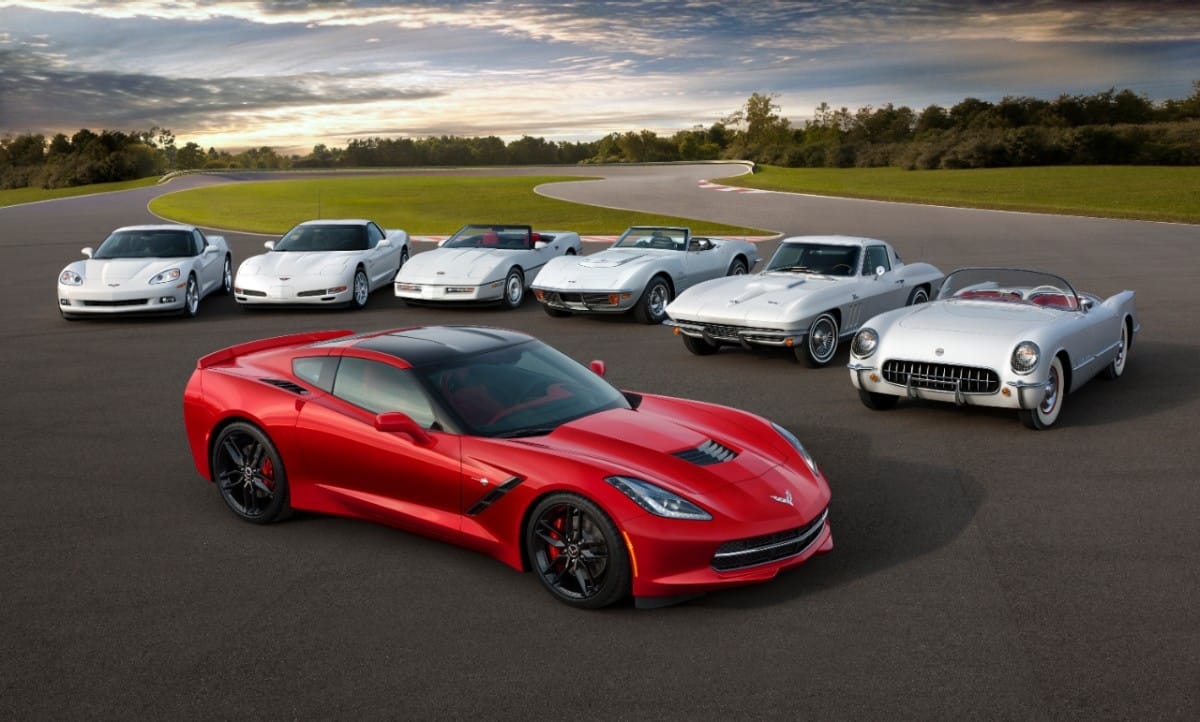The History of the Chevy Corvette

The Chevrolet Corvette is a well-known automobile; it is recognizable without any trouble. Corvette has a long and notable history. With its evolution over the years, it has remained a sports car for two.
The Corvette has been in production for more than six decades and has evolved into an automotive icon, becoming America's sports car. The car has yet to disappoint at auto exhibitions or on the international automotive scene in its 60 years of manufacturing. It is, without a doubt, the most popular sports car in the United States.
The Corvette Origins
The Corvette began development as "Project Opel" in late 1951, like the invention of GM designer Harley Earl. In 1953, GM unveiled its newest sports car, which was stunning. There was only one issue, though, the vehicle lacked a name. The car might have had a different name if it hadn't been for Public Relations assistant director Myron Scott who suggested "Corvette."
Surprisingly, the initial Corvette model was a convertible. In 1953, it was unveiled as a concept at the GM Motorama. The car's manufacturing was initially in Flint, Michigan, and St. Louis, Missouri, but production moved to Bowling Green, Kentucky, in 1981.
Generation One Corvette (1953-1962): Solid-Axle Models
The first 300 Corvettes built-in 1953 was a 3.9-liter inline six-cylinder engine producing 150 horsepower connected to a two-speed automatic transmission. The fiberglass-bodied cars were painted polo white and had red interiors.
In 1955, a 4.3-liter V8 engine with 195 horsepower and a three-manual transmission became available. The 1956 body featured a redesigned "face" and side coves and removed the tail-lamp fins.
A new body and interior were launched in 1958, along with a taller front end and quad headlamps. In 1961, the car's rear end was substantially revised, including a "ducktail."
Generation Two Corvette (1963-1967): Stingray Models
The first year of a tapering rear deck on a Corvette was 1963, ushering in the second generation corvette: the stingray models. Hidden headlamps, non-functional bonnet vents, and an independent rear suspension were outstanding features of the Stingray.
The rear split window design restricted the driver's visibility, but Chevy still built a model with a back split window. The split-window Corvette was only made for one year, making it the most valuable model.
Generation Three Corvette (1968-1982): Stingrays models
The generation three Corvette was based on the Mako Shark II concept car. Chevy redesigned the interior and body. Engine compression ratios were decreased in 1971 to suit standard fuel, resulting in significantly lower power.
In 1978, Corvette was used for the first time as an official pace car for the Indianapolis 500. The vehicle's appearance evolved little over time until the 25th anniversary of the Corvette in 1978. The fastback rear window and revised interior debuted on the 25th-anniversary model.
Generation Four Corvette (1984-1996): ZR-1 and Grand Sport Models
The fourth-generation Corvette was completely redesigned from the ground up. It was supposed to debut in 1983 but experienced delays due to components and quality issues. The C4 Corvette, which debuted in 1984, had a new chassis for enhanced handling, a sleeker body design, and a digital instrument cluster on the inside.
In 1986, there was an addition of a convertible to the mix. In 1996, Chevy produced 1,000 Grand Sport cars with a 330-horsepower engine, a great admiral blue paint job with white stripes, and dual red hash marks on the front left fender to commemorate the C4's final year of production.
Generation Seven Corvette (2014-2019): Stingray Models Rebirth
The seventh series of the Corvette arrived in 2014 with new features, like aluminum frames as standard on all models and the return of the Stingray brand. This series also saw the last front-engine Corvette. The black Z06 sold for $2.7 million on June 28th, 2019.
Generation Eight Corvette: The 2020 Corvette
The C8 Corvette is finally making the mid-engine leap after decades of rumors of a mid-engine variant. The 6.2-liter V8 powers both the coupe and convertible versions. This model has a retractable and convertible roof, a first for the Corvette.
The future of America's sports vehicle has finally arrived after a long and drawn-out process.
Visit Valley Chevy Dealers to Test Drive a Chevy Corvette Today!
You can now understand the significant transformation of GM's historic sports car, having started from where it all began.
Whenever you need a Corvette in Phoenix, contact your nearest Valley Chevy dealership and hit the road with your new Chevy Corvette!
Image by media Chevrolet
